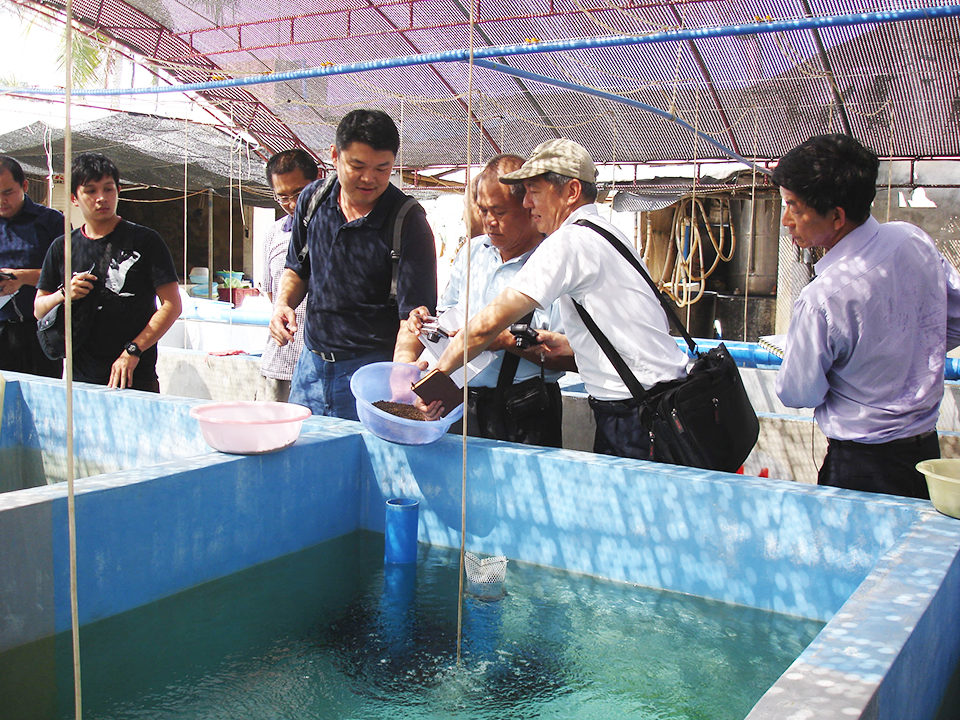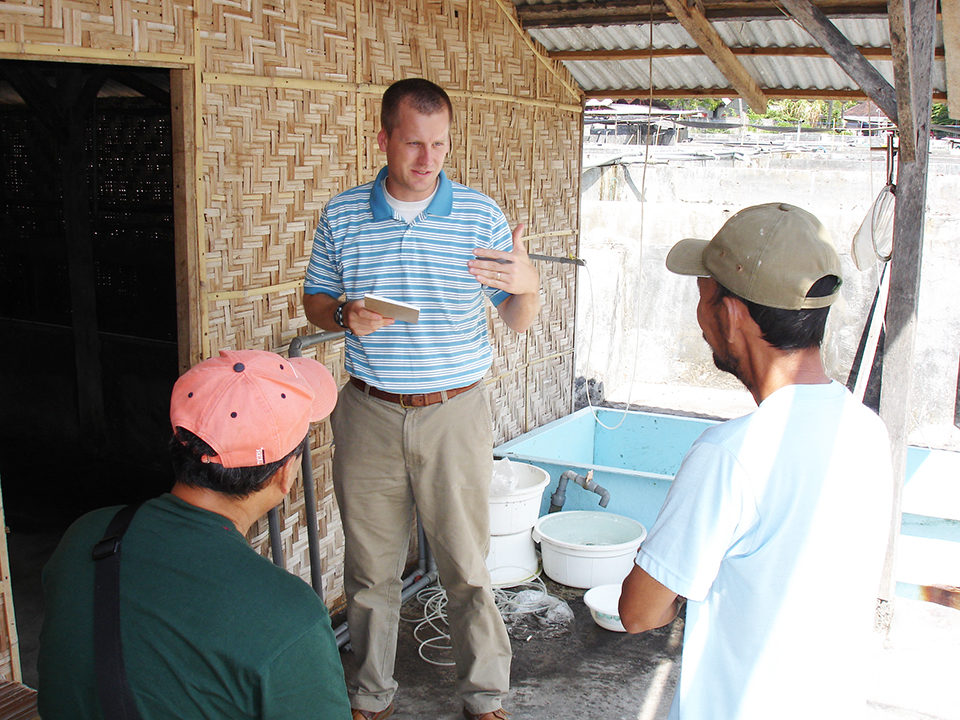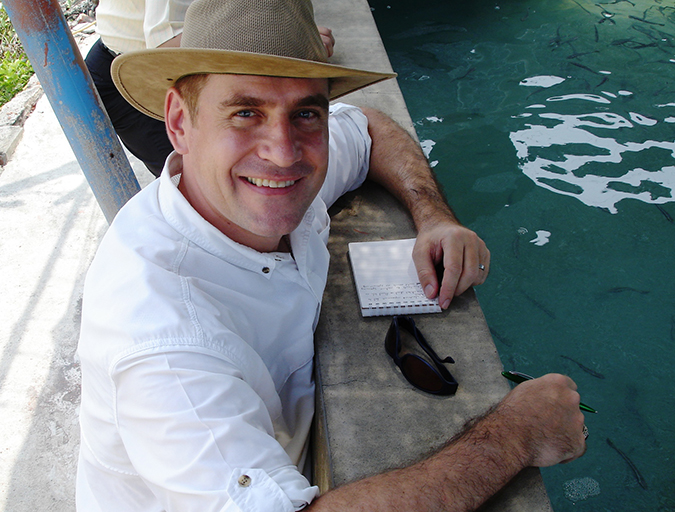Project pushes soy as a primary protein alternative for formulated feeds

As the world’s demand for high-quality seafood products continues to rise, future increases in production are unlikely to come from wild sources, and traditional aquaculture-producing areas will be strained to compensate. In China, for example, seafood demand is increasing, but the country is seeing a decrease in culture areas for marine fish, with desired coastal areas for pond and cage farming being taken away in favor of residential and tourism development.
Fortunately, a nearby area has many qualities suitable for marine fish aquaculture production. Geographically, climatically and resource-wise, Southeast Asia (SEA) has a very favorable situation for increasing production. It is situated close to China, a large and growing market, while having strong domestic markets itself. Climatically, much of SEA is in the sub-tropical to tropical zone, which allows year-round culture of marine species.
Resource-wise, SEA has long stretches of coastline, both on the main Asian landmass and in the island archipelagos of Indonesia and Philippines. Marine aquaculture is already established in SEA with a wide variety of mid- to high-value marine species produced, from milkfish and Asian sea bass to various species of groupers.
ASAIM
Recently, the American Soybean Association International Marketing (ASAIM) Program, a non-profit, international marketing organization supported by United States soybean farmers and the U.S. government, has been focusing its efforts to advance sustainable aquaculture systems on marine fish aquaculture in cages and ponds in Asia.
While developing technological approaches to improve aquaculture production, the program is also helping the aquaculture industry move away from dependence on low-quality inputs, such as powder feeds and so-called “trash fish,” by showing the utility of soy as a primary protein replacement for fishmeal and other marine-based ingredients in formulated feeds.
Marine culture challenges
In its work with varied aquaculture stakeholders in Southeast Asia, ASAIM has identified several challenges to further development in SEA. The first is the sustainable development of the industry using the best technological and production approaches. The focus of the SEA marine fish aquaculture industry should not be to replicate the experience of the Chinese producers.
China has seen overuse of common nearshore waters, with both a negative visual situation with thousands of cages filling protected coves and bays, and a negative culture situation with low fish survival. In the opinion of ASAIM, this is a regulatory and education issue that can and should be addressed by those governments and industry groups that are willing to take appropriate action.
The ASAIM program is already working with the industry to educate both farmers and governments on better approaches, including work this year on a practical model for use of common water resources for use by regulatory agencies. Other critical issues of importance are the use of trash fish as a food source, identification of appropriate diets for specific marine species, use of formulated feeds, security of cage operations, diseases and developing stable markets, both domestic and international.
Seedstock needed
One area overrides most others from the ASAIM standpoint: the need for a base of high-quality, disease-free, genetically fit fingerlings that can be sourced in large volumes to grow the industry. This was the experience of ASAIM in China with freshwater species, where it was critical to develop quality seed for the industry to thrive and expand.
In SEA, many government and private hatcheries have been operating for quite some time to provide a variety of marine fish fingerlings to farming operations. In the past 10 years, ASAIM has visited many hatcheries in the region and concluded the hatchery industry needs more focused attention.
Technologically, hatcheries in SEA are often run as a complete operation, with broodstock holding, spawning, egg hatching, initial live foods production and sometimes growth into the nursery stage before fingerlings are sold to farmers. This is in contrast to the highly efficient Taiwan model, in which each life stage is typically focused upon by one operation. Initially it was thought that this was a major block to expansion, as many hatcheries were not using the most up-to-date practices at their operations.
As a result, ASAIM brought select groups of hatchery staff from SEA to visit and learn from the hatchery operations in Taiwan and China. In addition, ASAIM brought technical experts into SEA hatcheries to physically inspect the production techniques and provide expert advice. In many areas, minor changes in techniques and equipment could result in dramatic improvements for hatcheries and positively impact the industry.

Genetics
Genetics is a key aspect of hatchery development that will take significant effort to address, for unlike most freshwater fish and shrimp, marine fish take a long time to reach maturity. Development of broodstock is a slow and high-risk process. Hatchery owners may hold and feed a brooder for many years before any possible production of eggs or sperm as a return on their investments.
In working with the industry, ASAIM has seen little attention paid to the genetic aspect of marine fish broodstock. Farmers in Thailand, for example, complain that fish don’t perform as well as they did 10 years ago. This same thought has been expressed in the Philippines, Indonesia and elsewhere with marine fish aquaculture industries.
At least part of this decline in performance is believed to be caused by simple inbreeding depression, which happens when fish from similar backgrounds are repeatedly bred together. Few hatcheries in SEA pay close attention to the genetics of their broodstock, many of which may have come from a small initial population without further effort to bring in new, outside stock. The desire to select fast growers for broodstock development often leads to close family siblings being bred together.
ASAIM has started to bring in experts to help with this issue. In 2010, Dr. Morten Rye discussed fish genetic issues with a regional audience at the ASAIM Aquaculture Meeting in the Philippines. In 2011, ASAIM brought Dr. Eric Peatman to hatchery operations and stakeholder groups in Thailand, the Philippines and Indonesia. Both experts highlighted the importance of genetics to the marine fish industry. Peatman particularly shared practical advice on starting a basic genetics program.
Disease issues
Diseases have also played an important role in the lack of quantity and quality of fingerlings. Broodstock are difficult to acquire and develop, so hatchery managers desire to keep them as long as possible and give them the best foods possible to promote rapid development and optimal spawning. Initial broodstock are often sourced from the wild or existing aquaculture operations.
While in the hatchery system, broodstock are usually fed a variety of unprocessed or lightly processed fresh fish or other seafood products, sometimes with extra vitamins, minerals or other additives. But obtaining fish from the wild and using fresh feeds are causes of concern as possible vectors for disease.
While most parasites and bacterial infections can be effectively treated, viral diseases are not treatable. Logically, broodstock that are infected with untreatable viral illnesses that can be passed to their offspring should be killed. However, this is not the typical approach seen in the industry.
Broodstock are rarely quarantined and tested for viral or other infections before being brought into the general broodstock population. Because they are often fed wet feeds made from other seafood, brooders are repeatedly exposed to potential sources for infection by parasites, bacteria or viruses. Testing existing broodstock for possible viral infections is also uncommon.
What this leads to is potential subclinical infections of both the brooders and their progeny. During stressful events, valuable brooders may be lost when disease expresses itself. Grow-out farmers may be surprised when the fingerlings they assumed were of good quality suddenly die during a stressful event – a possible sign of an initially subclinical infection that started in the hatchery. Even when fish are protected from infection during grow-out with formulated feeds and good culture practices, not much can be done if fish are already infected with a viral disease.
Benefits from new approach
In recent ASAIM work with the marine fish hatchery industry, it appears many hatcheries are still not paying attention to these issues, but some are realizing the benefits of changing their approaches. In this coming year, ASAIM is continuing work with several government and private hatcheries that have expressed interest in learning how to better manage their hatcheries, broodstock feed approaches and futures. By highlighting issues and working with industry, including other companies and organizations with an interest in marine fish, ASAIM hopes to help the Southeast Asia marine fish aquaculture industry rapidly improve and expand.
(Editor’s Note: This article was originally published in the January/February 2012 print edition of the Global Aquaculture Advocate.)
Now that you've reached the end of the article ...
… please consider supporting GSA’s mission to advance responsible seafood practices through education, advocacy and third-party assurances. The Advocate aims to document the evolution of responsible seafood practices and share the expansive knowledge of our vast network of contributors.
By becoming a Global Seafood Alliance member, you’re ensuring that all of the pre-competitive work we do through member benefits, resources and events can continue. Individual membership costs just $50 a year.
Not a GSA member? Join us.
Author
-
Lukas Manomaitis
Technical Director, Aquaculture
American Soybean Association International Marketing Program
Southeast Asian Regional Office
541 Orchard Road
#11-03 Liat Towers
Singapore 238881
Tagged With
Related Posts

Health & Welfare
A holistic management approach to EMS
Early Mortality Syndrome has devastated farmed shrimp in Asia and Latin America. With better understanding of the pathogen and the development and improvement of novel strategies, shrimp farmers are now able to better manage the disease.

Responsibility
A look at integrated multi-trophic aquaculture
In integrated multi-trophic aquaculture, farmers combine the cultivation of fed species such as finfish or shrimp with extractive seaweeds, aquatic plants and shellfish and other invertebrates that recapture organic and inorganic particulate nutrients for their growth.

Responsibility
A look at various intensive shrimp farming systems in Asia
The impact of diseases led some Asian shrimp farming countries to develop biofloc and recirculation aquaculture system (RAS) production technologies. Treating incoming water for culture operations and wastewater treatment are biosecurity measures for disease prevention and control.

Aquafeeds
Aquaculture Exchange: Lukas Manomaitis, USSEC
The U.S. Soybean Export Council is a huge supporter of aquaculture growth globally, as so many aquafeed formulators rely on U.S. soy to create nutritious diets. The Southeast Asia senior technical advisor for USSEC’s aquaculture program talks about this symbiotic partnership.



